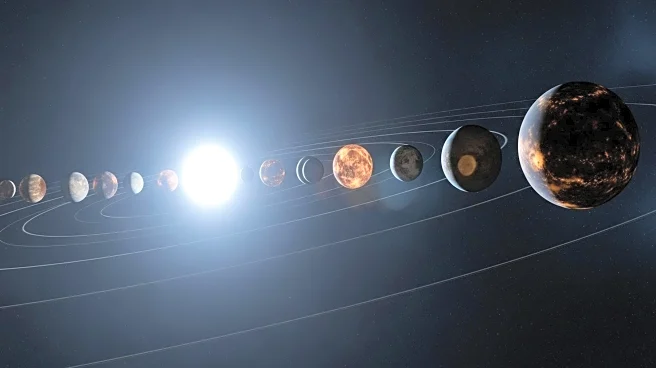What is the story about?
What's Happening?
Recent research has revealed that the asteroid belt between Mars and Jupiter is gradually losing mass. This belt, once thought to be a permanent feature of the solar system, is losing approximately 0.0088% of its mass annually due to gravitational influences and collisions. The study, led by astronomers from the Universidad de la República in Uruguay, indicates that the asteroid belt was about 50% more massive 3.5 billion years ago. The mass loss results in fragments being ejected towards the inner solar system or ground into meteoritic dust. This ongoing depletion challenges the perception of the asteroid belt as a static structure and highlights its dynamic nature.
Why It's Important?
The gradual disappearance of the asteroid belt has significant implications for understanding the history and evolution of the solar system. The mass loss contributes to the flow of material towards Earth, impacting its geological history and potentially influencing the development of life. The study provides insights into the past bombardment rates of Earth and the Moon, correlating with geological evidence of declining impacts over billions of years. This research also aids in modeling future risks from near-Earth objects, which is crucial for planetary defense strategies. Understanding the asteroid belt's dynamics can help predict future changes in the solar system's structure.
Beyond the Headlines
The findings challenge the traditional view of the asteroid belt as a stable feature, suggesting a more complex and evolving solar system. The study highlights the role of gravitational interactions in shaping celestial structures and emphasizes the importance of continuous observation to understand long-term changes. The research also underscores the need for advanced telescopes to monitor these changes and improve our understanding of the solar system's history. This knowledge is vital for developing strategies to mitigate potential threats from asteroids and for exploring the potential for resource utilization in space exploration.
AI Generated Content
Do you find this article useful?

